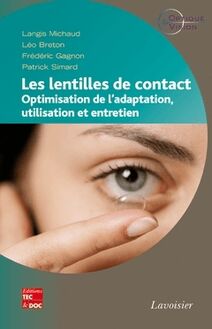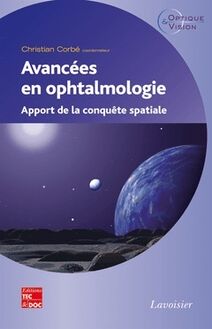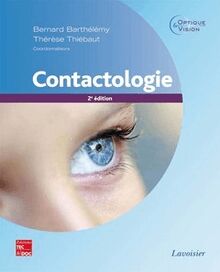Contactologie , livre ebook
1066
pages
Français
Ebooks
2012
Obtenez un accès à la bibliothèque pour le consulter en ligne En savoir plus
Découvre YouScribe en t'inscrivant gratuitement
Découvre YouScribe en t'inscrivant gratuitement
1066
pages
Français
Ebooks
2012
Obtenez un accès à la bibliothèque pour le consulter en ligne En savoir plus
Publié par
Date de parution
22 juin 2012
Nombre de lectures
1 762
EAN13
9782743063658
Langue
Français
Cet ouvrage de plus de 1000 pages est à la fois une encyclopédie des connaissances théoriques nécessaires à la pratique de l'optique de contact et un guide concret pour l'exercice quotidien de l'adaptation. Il constitue une véritable référence par sa forme très didactique et son exhaustivité, il permet également un accès rapide à l'information grâce à sa présentation par double page.
Unique en langue française, Contactologie permet aux adaptateurs d'entretenir leurs connaissances par une approche pluridisciplinaire, pour le plus grand bénéfice du consommateur. En 27 sections, ce traité passe en revue l'ensemble des connaissances nécessaires à la pratique de la contactologie : des notions d'anatomie, de microbiologie ou de pharmacologie, jusqu'à l'adaptation au cas des lentilles sphériques, des patients astigmates ou presbytes, en passant par la présentation des produits d'entretien et des complications éventuelles.
Cette nouvelle édition revue et augmentée de Contactologie s'adresse à tous les professionnels de la vision (opticiens-lunetiers, ophtalmologistes, optométristes, orthoptistes...) auxquels elle offrira de multiples lectures propres à enrichir leur pratique et leur implication en faveur de l'optique de contact.
Préface - Pr Brien Holden, PhD FAAO. I. Histoire des lentilles - Pierre Rocher, FAAO. II. Anatomie - Dr Brigitte Lutcher. III. Film lacrymal - Michel Guillon, PhD FAAO - Cécile Maissa, PhD. IV. Notion de microbiologie - Gil Charrier. V. Notion de pharmacologie - Dr Brigitte Lutcher. VI. Pathologies de surface oculaire - Pr Hervé Offret. VII. Matériaux - Cécile Maissa, PhD. VIII. Fabrication des Lentilles de Contact - Philippe Seira. IX. Contrôle des paramètres - Philippe Seira. X. OEil et astigmatisme - B. Barthélemy - T. Thiébaut. XI. Optique de contact, effets induits - B. Barthélemy - T. Thiébaut. XII. Basse vision - B. Barthélemy - T. Thiébaut. XIII. Tables de calcul - B. Barthélemy - T. Thiébaut. XIV. Optométrie en contactologie - B. Barthélemy - T. Thiébaut. XV. Biométrie - B. Barthélemy - T. Thiébaut. XVI. Kératométrie - B. Barthélemy - T. Thiébaut. XVII. Topographie - B. Barthélemy - T. Thiébaut. XVIII. Biomicroscopie - B. Barthélemy - T. Thiébaut. XIX. Techniques cliniques avancées - M. Guillon - M. Gobbe - N. Mahalingham. XX. Adaptation généralités - B. Barthélemy - T. Thiébaut. XXI. Adaptation des amétropies sphériques - B. Barthélemy - T. Thiébaut. XXII. Adaptation des astigmates - B. Barthélemy - T. Thiébaut. XXIII. Adaptation des presbytes - B. Barthélemy - T. Thiébaut. XXIV. Adaptations spécifiques - B. Barthélemy - T. Thiébaut. XXV. Manipulations - B. Barthélemy - M. Dubois-Guillou - T. Thiébaut. XXVI. Produits d'entretien - B. Servel. XXVII. Complications - B. Barthélemy - I. Jalbert - Dr B. Lutcher - T. Thiébaut. Annexes B. Barthélemy - Pr M. Millodot - T. Thiébaut. Index.
Publié par
Date de parution
22 juin 2012
Nombre de lectures
1 762
EAN13
9782743063658
Langue
Français


